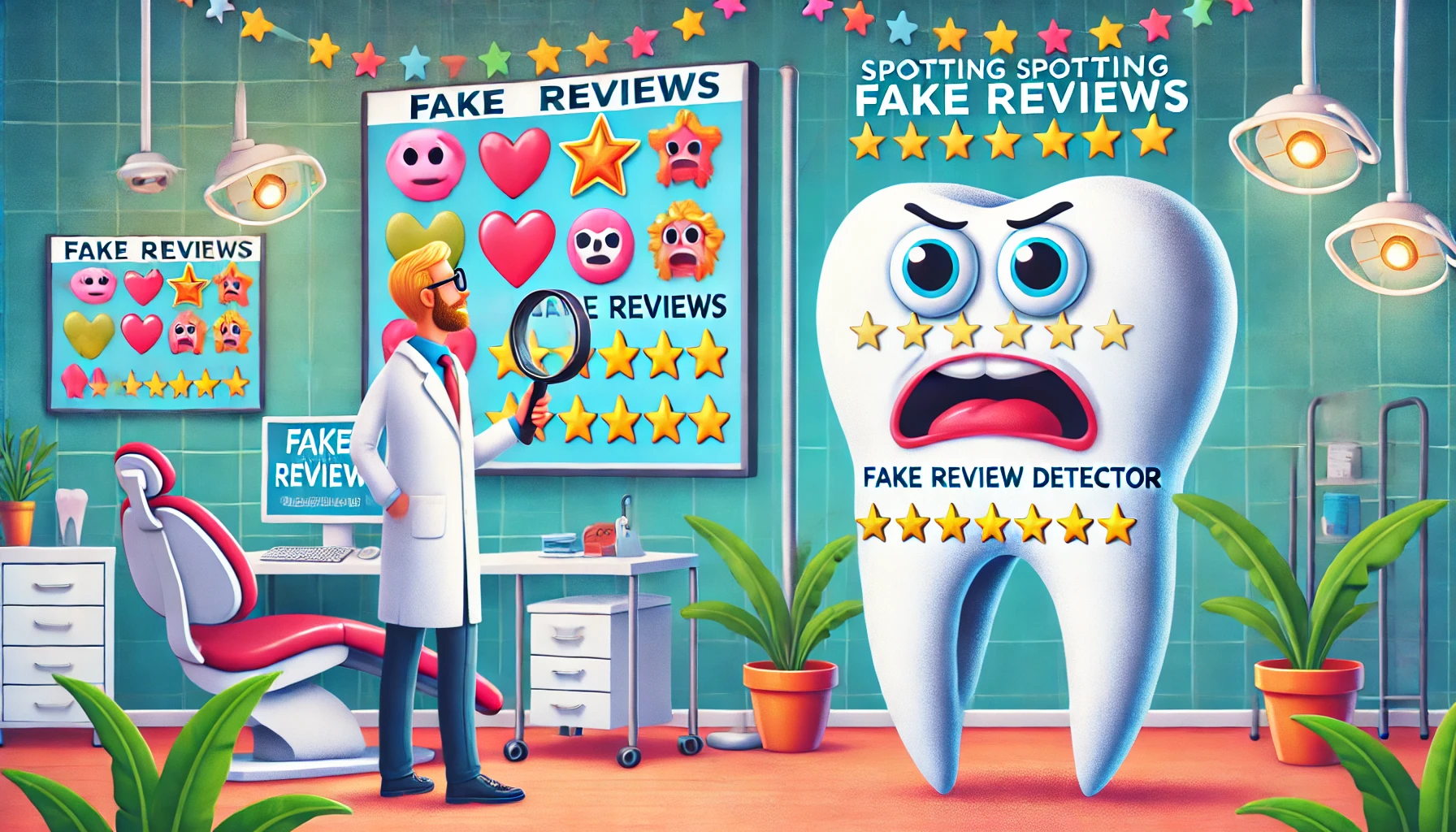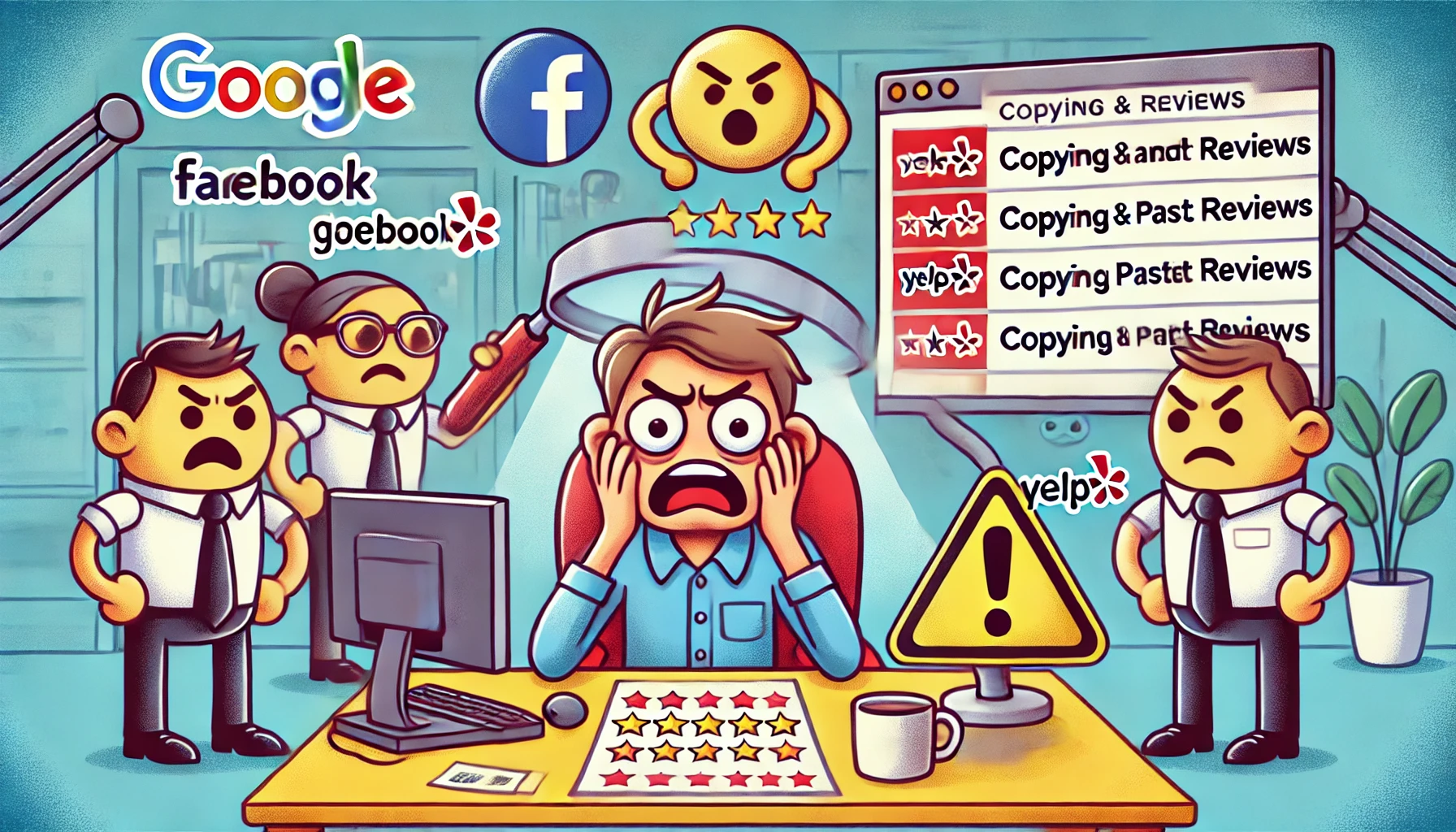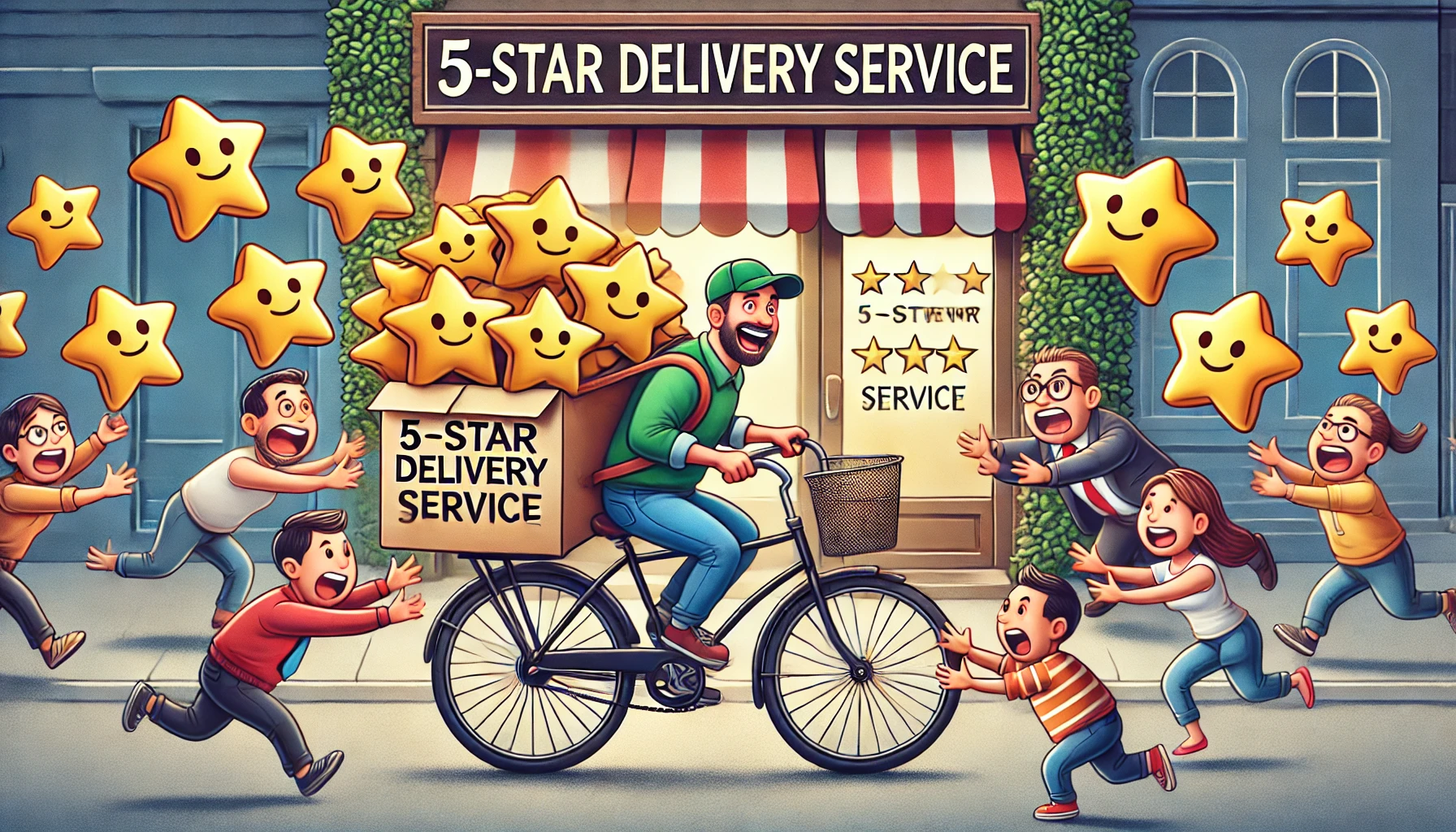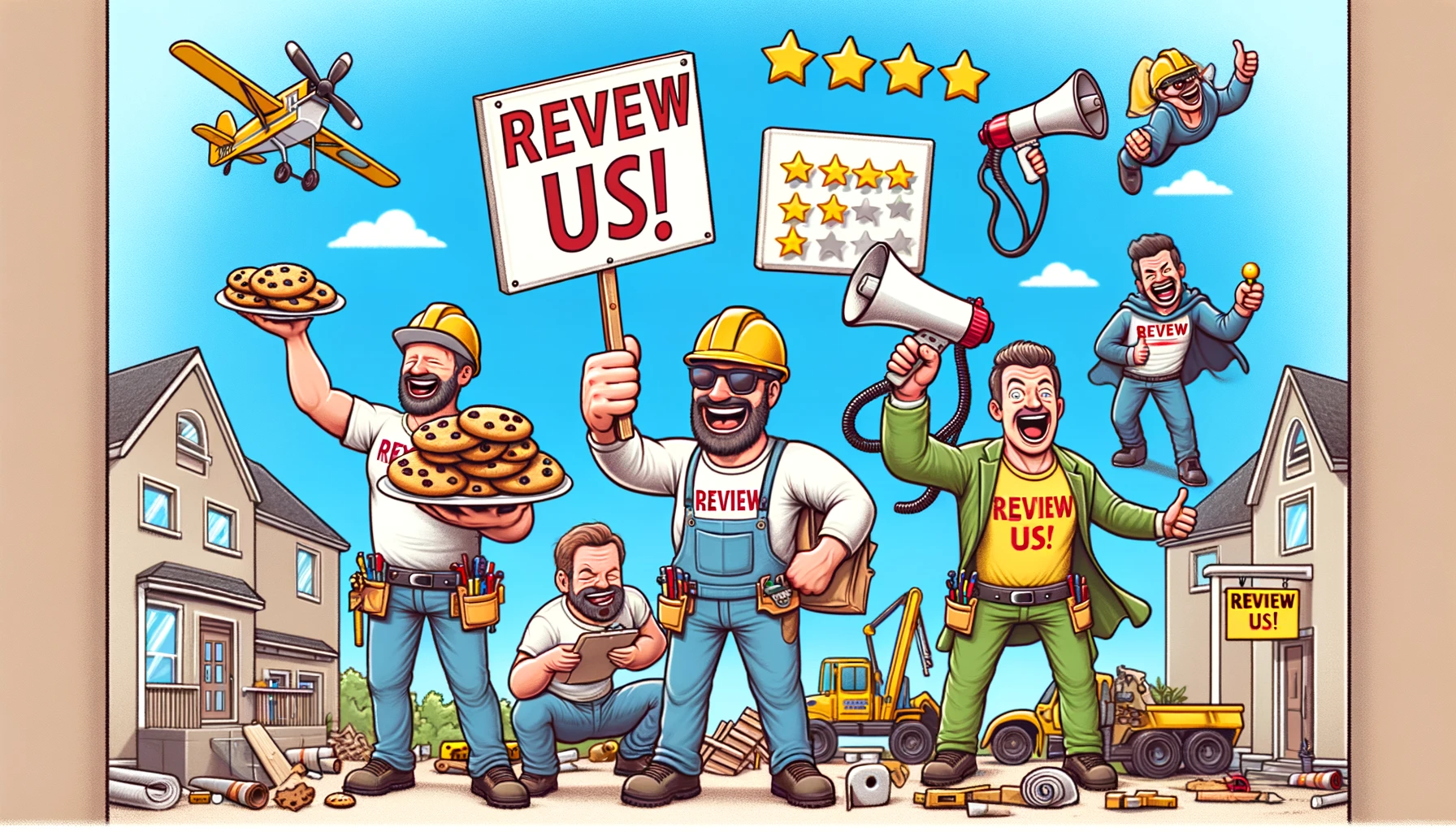Customer feedback made easy: Enhance your business growth
Contenido:
Why Customer feedback matters
Easy and effective feedback collection methods
Implementing feedback strategies effectively
Turning feedback into actionable insights
Creating a continuous feedback loop
Números y hechos
Expert opinions on gathering customer feedback
For small business owners, understanding what your customers think about your products or services is essential for growth and improvement. But how can you efficiently gather this valuable information? In this article, we will explore easy steps to get customer feedback, ensuring your business remains competitive and meets customer needs.
By implementing these steps, you can gain valuable insights, foster customer loyalty, and drive your business forward.
Why customer feedback matters
Customer feedback is crucial for small businesses for several reasons. It helps build loyalty, identifies areas for improvement, and provides insights for innovation.
Builds сustomer loyalty and trust: Customers feel valued when their opinions are solicited and acted upon. This fosters loyalty and creates a sense of belonging. When customers see that their feedback leads to real changes, they are more likely to remain loyal to your brand.
Identifies areas for improvement: Feedback highlights what works well and what needs enhancement. It provides a clear direction for business improvements. For instance, if multiple customers mention the same issue, it indicates a problem that needs to be addressed.
Provides insights for innovation: Customer suggestions can lead to new ideas and improvements. These insights can help businesses stay ahead of the competition. Innovative ideas often come from the people who use your products or services daily.
According to a study by Bain & Company, businesses that excel at customer feedback management grow revenues 4-8% above their market. This statistic underscores the financial benefits of actively seeking and implementing customer feedback.
Easy and effective feedback collection methods
There are various simple methods to collect customer feedback. Here are a few effective ones:
Surveys and questionnaires
Use online tools like Google Forms or SurveyMonkey to create and distribute surveys. Keep them short and focused to encourage more responses. For example, ask specific questions about recent purchases or customer service experiences.
Social media and online reviews
Engage with customers on platforms like Facebook, Instagram, and Yelp. Respond to reviews and ask for more detailed feedback to gain deeper insights. This interaction shows customers that you value their opinions and are committed to improving.
Direct interactions
In-store feedback forms, follow-up emails, and phone calls can provide valuable insights. These direct interactions often yield more honest and detailed feedback. Train your staff to ask for feedback during face-to-face interactions politely.
For example, Starbucks uses its My Starbucks Idea platform to gather and implement customer feedback. This approach has led to numerous product innovations and increased customer satisfaction.
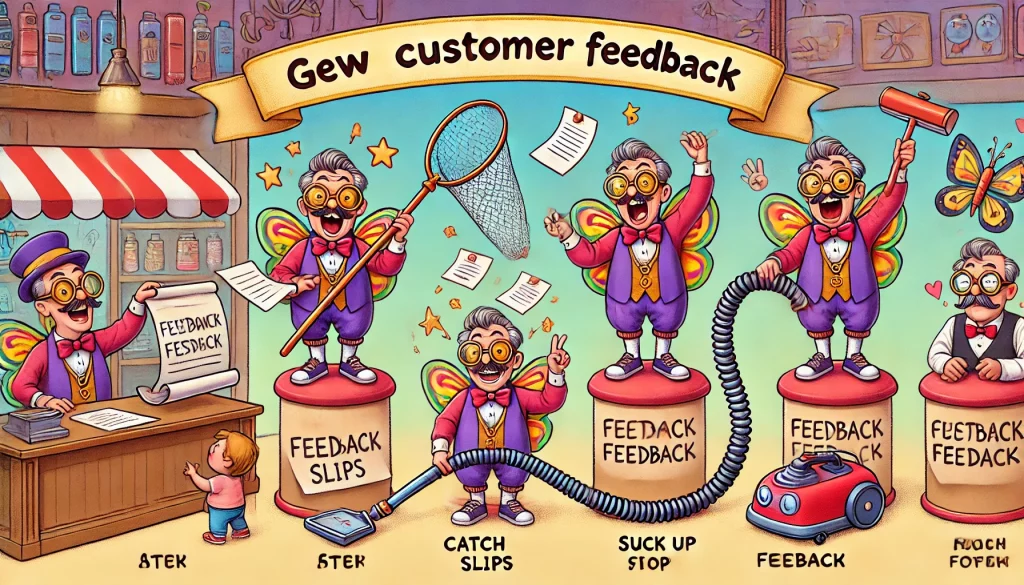
Implementing feedback strategies effectively
To effectively gather and utilize customer feedback, follow these steps:
Establecer objetivos claros
Determine what you want to learn from the feedback. Clear objectives will help you ask the right questions and focus on relevant issues. For instance, are you looking to improve a specific product, enhance customer service, or explore new product ideas?
Choose the right channels
Select the most appropriate feedback methods for your business. Different channels might be more effective depending on your target audience. For example, younger customers may prefer online surveys, while older customers might be more comfortable with phone interviews.
Train staff
Ensure employees understand the importance of feedback and know how to collect it. Proper training will ensure that feedback collection is consistent and effective. Conduct regular training sessions and provide guidelines on how to ask for and handle feedback.
A practical approach is to use a combination of methods. For instance, combining online surveys with in-store feedback can cover a broader range of customer opinions, ensuring you don’t miss any valuable insights.
Turning feedback into actionable insights
Once feedback is collected, it’s essential to analyze it and implement changes based on the insights gained.
Data analysis: Categorize and summarize feedback to identify common themes. This helps in understanding the overall sentiment and key issues. Use tools like Excel or specialized software to organize and analyze the data.
Identifying trends: Look for recurring issues or suggestions. These trends indicate areas that need immediate attention or improvement. For example, if many customers mention long wait times, it’s a clear sign that your service process needs optimization.
Making improvements: Prioritize changes based on the most significant feedback. Implementing these changes can significantly enhance customer satisfaction and loyalty. Create a plan of action, set deadlines, and assign responsibilities to ensure that improvements are made promptly.
For example, a small café might notice frequent comments about slow service. In response, they could streamline their ordering process, resulting in a better customer experience.
Creating a continuous feedback loop
Establishing a continuous feedback loop ensures ongoing improvement and customer satisfaction.
Regular feedback requests
Incorporate feedback collection into your regular business operations. This ensures you consistently receive new insights and can adapt quickly. Make it a habit to ask for feedback at various touchpoints, such as after a purchase or during customer service interactions.
Acting on feedback
Show customers that their feedback is valued and leads to tangible changes. This demonstrates your commitment to meeting their needs. Share stories or examples of how customer feedback has led to specific improvements.
Communicating changes
Inform customers about improvements made based on their feedback. This transparency builds trust and encourages further feedback. Use newsletters, social media updates, or in-store signage to communicate these changes.
For instance, Zappos is known for its exceptional customer service, partly due to its constant solicitation and implementation of customer feedback. This approach has helped them maintain a loyal customer base.

Números y hechos
80% of businesses believe they provide superior customer service, but only 8% of customers agree with this perception (Bain & Company).
68% of customers are willing to provide feedback when asked (Microsoft’s State of Global Customer Service Report, 2020).
52% of customers believe that companies need to take action on their feedback (Qualtrics XM Institute, 2021).
Businesses that actively engage in feedback collection and implementation see a 10-15% increase in customer retention rates (Gartner).
41% of consumers trust a brand more when it actively seeks out and acts on their feedback (Salesforce Research, 2021).
77% of customers view brands more favorably if they ask for and accept customer feedback (Microsoft, 2020).
Companies that collect customer feedback experience a 5-10% increase in overall revenue (Forrester Research).
87% of companies that use customer feedback programs see a positive impact on their bottom line (Customer Thermometer, 2021).
90% of unhappy customers will not do business with a company again if their complaints are ignored (Lee Resources).
70% of consumers say that their loyalty is influenced by their ability to provide feedback (HubSpot, 2020).
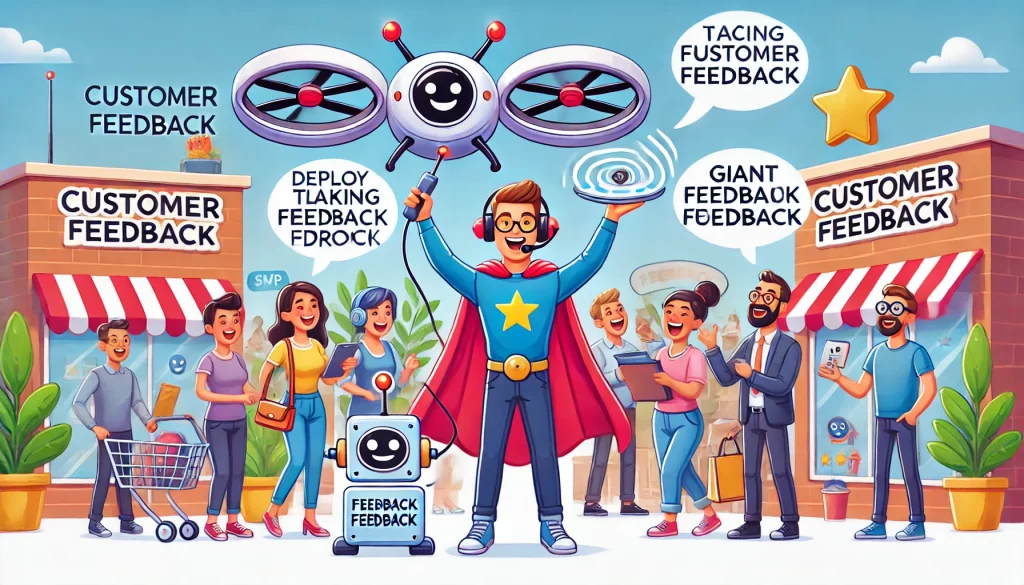
Expert opinions on gathering customer feedback
Laura Middleton, Customer Experience Consultant at Feedback Solutions Inc. “Gathering customer feedback doesn’t have to be a daunting task. By simplifying the process into five manageable steps, businesses can significantly improve their customer service strategies. First, make it easy for customers to provide feedback by offering multiple channels such as online surveys, social media, and direct emails. Second, ensure your questions are clear and concise to avoid overwhelming respondents. Third, respond to feedback promptly to show customers their opinions matter. Fourth, analyze the feedback to identify trends and common issues. Finally, implement changes based on the insights gained and communicate these changes to your customers to close the feedback loop effectively.”
James O’Connor, Senior Analyst at Market Pulse Insights “The key to successful customer feedback lies in the structure of your approach. Step one should always be to set clear objectives on what you want to learn from your customers. This helps in designing focused and relevant questions. Step two is to integrate feedback requests into existing customer touchpoints, such as purchase confirmation emails or post-service follow-ups. Step three involves incentivizing feedback, perhaps through discounts or loyalty points, to increase participation rates. Step four is about maintaining a consistent feedback schedule to regularly capture customer sentiments. Lastly, step five is to review and refine your feedback process periodically to adapt to changing customer needs and business goals.”
Michelle Torres, Director of Customer Relations at Client Connect “Creating a seamless feedback process can transform the way you understand and serve your customers. Step one is to identify the best timing for feedback collection, like immediately after a purchase or service experience. Step two is to personalize your feedback requests to make customers feel valued. For step three, leverage technology such as CRM systems and feedback tools to automate and streamline the process. Step four involves training your staff to handle feedback positively and constructively. Step five is crucial: always follow up on the feedback received, whether it’s addressing a complaint or thanking a customer for their input. This follow-through builds trust and loyalty.”

 8 min
8 min 

